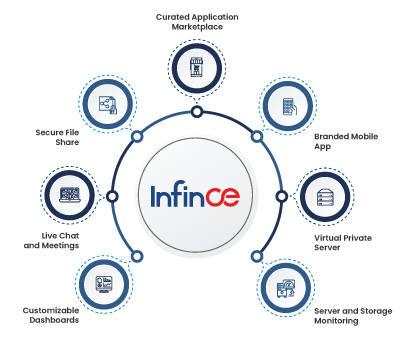4 ways to bolster your IT team’s efficiency to support remote operations during COVID-19
It’s only the second week of June 2020 and the total number of confirmed COVID-19 cases worldwide has come close to 7.15 million. Governments, businesses, and people have started to realize that we may need to learn to live with the coronavirus for an unexpected period of time, at least until vaccines are found that can neutralize or eliminate its threat for good. Businesses and universities have transitioned their core operations to adopt a remote work culture. Except for some critical work operations that require a physical presence in the workplace, almost all companies now operate with employees working out of their homes.
Read More: Effective Work From Home Tips – Infographic
What does this mean for the IT department across businesses who have moved into a remote work operation mode?
IT teams need to quickly support the transition of the entire IT work infrastructure into a near 100% remote mode. From productivity tools to instant peer communication platforms, everything needs to be available for employees irrespective of where they are located.
Here are some best practices you can utilize to get your IT team prepared for keeping your employees connected to their workplace virtually during such uncertain times.
1. Set Communication Policies
While remote working employees need access to multiple communication channels to effectively work on their tasks, it is important for companies to define the clear scope of each channel. One example would be an optimal usage of paid communication channels like VOIP facilities with limited licenses or shared licenses between departments.
There should be a minimum availability of each such resource and policies must be laid out to ensure optimal utilization.
Read More: How can businesses manage their remote workforce through efficient communication?
For example, if teleconferencing between team members of a project requires more time and more users to be connected to a single conference call, it can be moved to an online meeting platform that offers unlimited conferencing options rather than using limited license telephone-based VOIP conferences. This offers your IT team the flexibility to allot VOIP facilities to more demanding teams like customer-facing employees who may find it difficult to ask customers to get into online meetings rather than just a conversation over the telephone.
2. Secure Information Access
When employees work from their office, confidential information regarding customer projects may be distributed in local networks which could only be accessed from office computers.
When there is a shift to remote working, this information should go into a more distributed storage facility that can be accessed over the internet. Hence a proper security policy and protocol must be defined for flexible information access over the internet. This allows IT teams to implement monitoring systems, maintain access logs, set privileged access options, and much more.
Moreover, all employees need to be strictly made aware of these policies through regular communication from leaders, managers, and HR. Security should not be the sole responsibility of your IT team but an extended oversight of the entire workforce.
Read More: Why Is InfinCE A Better Choice For Safe Video Calling Than Zoom
3. Provisioning of Digital Platforms and Tools
There is a huge demand for collaboration and communication platforms when employees work together on projects. The demand escalates to unprecedented levels when your stakeholders shift to a remote mode.
From meetings to file sharing to project management, there is a multitude of managerial overhead for facilitating seamless operations while employees are working from home.
This calls for the implementation of a powerful digital enterprise platform like InfinCE which can offer different departments within your organization the necessary digital tools and platforms for communication and collaboration. Such platforms make it easy for your IT team to manage overall digital infrastructure availability for remote workers and make support readily available for their needs at any time.
Read More: Best Practices to Remotely Manage Your Business During COVID-19
4. Measure, Analyze and Improve
For many businesses, this is probably the first instance where such a massive remote working policy came into force and that too in a very short notice. Glitches and delays are expected, but the key focus here should be to learn from each event and ensure a better experience the next time.
It is important to regularly measure productivity levels of staff and align it with IT objectives such as availability, file management, security and data policies, software and license management, etc.
Set out clear KPIs for measuring employee productivity during the timeline of remote work. The measured values should be analyzed to arrive at trends that occur in work patterns frequently. Feedback from employees should be collected with regards to infrastructural availability, network, or communication channel flexibility, etc. Learnings from all these should be factored in while your IT department optimizes your digital infrastructure to meet rising demands from your workforce.
Read More: How InfinCE helps you quickly transit to remote working
The remote work culture is expected to remain a norm for months to come as the COVID-19 pandemic is not showing a dramatic rate of containment of spread. Your IT teams need the most resilient enterprise IT platforms to help manage complex requirements of the entire workforce who are working remotely. This is where enterprise platforms like InfinCE can be their best friend. Get in touch with us to know how some of the world’s best businesses manage their digital workforce infrastructure seamlessly with InfinCE.





